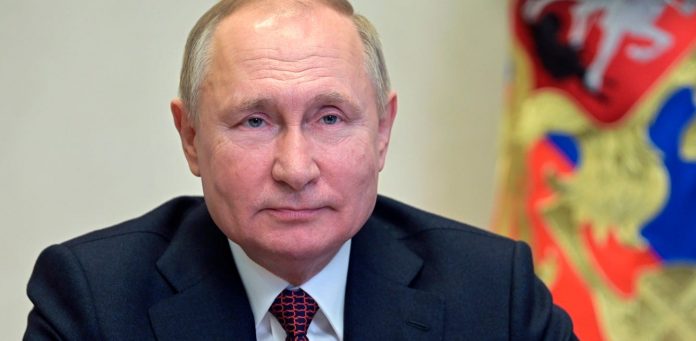One thing I learned from the CIA is that deciphering Vladimir Putin’s personality, or, as his Russian comrades would call it, “chem chelovek dishit”, literally means “how does a person breath,” is the key to unlocking the mystery of the British Prime Minister Winston Churchill’s Russian “riddle wrapped in an enigma”. Let’s first consider the important questions: Why did Putin deliberately choose to create a crisis by sending over 100,000 troops to Ukraine’s borders? What is he hoping to gain, and what could he be putting at risk?
Putin was trained in the art and techniques of cloak-and-dagger espionage and served many years before the collapse Soviet Union. He later became Director of Russia’s internal security force, the FSB. Putin’s goal is to stay in power. His tactics are reminiscent of a coldly calculated spy who exploits the weaknesses of his adversaries with extraordinary effectiveness.
Putin and his comrades refer to the United States as the Kremlin’s main adversary. Putin believes that the U.S.-led NATO alliance poses a threat to his regime’s security. This is not due to NATO’s ostensible threat of military conflict, which Putin intentionally exaggerates. It is because Western ideals such as liberty, freedom, and democracy could spread to Russia, breaking Putin’s grip on the Russian government.
Putin is worried about Ukraine because Putin sees it as a threat to his regime.
Putin saw an opportunity to increase pressure on Ukraine and create a crisis, even though the Biden administration claimed its goal was to establish a “stable” and predictable relationship with Russia. Putin might have thought that the Biden administration while refusing to leave behind a few thousand troops in Afghanistan to stop it from becoming a terrorist state and transforming into one, was so preoccupied with its domestic agenda that it would make concessions to Ukraine.
Putin has deliberately made the most unpredictable and aggressive threats against Ukraine and is now asking for a high price to remove them. Putin, in the spirit of the Soviet dictators he served, has made unrealistic demands and imposed artificial deadlines to only increase tension.
The Biden administration could not have expected anything less from the Kremlin. It invaded and occupied Georgia, enjoys a strategic partner with Iran, poisoned Sergey Skripal, a former Russian military intelligence officer, and Alexei Navalny, with a banned chemical nervous agent; interfered with U.S. elections and European elections; and launched malicious cyberattacks on U.S. government and private sector infrastructure.
Putin is already reaping the benefits of Ukraine’s crisis.
First, Putin directed his state-controlled media to portray Ukraine as such a serious threat that Russia could not resist sending troops to the border.
NATO is a defense alliance. Russia, however, is the most powerful nation on the continent with superior nuclear and conventional forces. Putin views NATO and Ukraine as Russia’s enemies and can therefore attack his own borders to threaten liberty, freedom, and democracy.
Second, Putin has shown NATO that it is ineffective to force him to withdraw his troops. Putin can threaten Ukraine’s territorial integrity, sovereignty, and sovereignty for as long as he wants. Putin is creating a wedge between the U.S.A. and Ukraine by demonstrating that NATO doesn’t have the leverage necessary to deter, counter, or defend against the Kremlin.
Third, Putin has increased Russia’s domestic prestige by going toe-to-toe with Russia’s superpower rival. This shows that he is still capable of dealing with domestic and foreign enemies despite being in power for over two decades.
Putin has learned from the failed KGB coup against Gorbachev the most dangerous threats to an autocratic system are often from within. He knows that he must not show weakness or risk an uprising even among his most loyal supporters.


